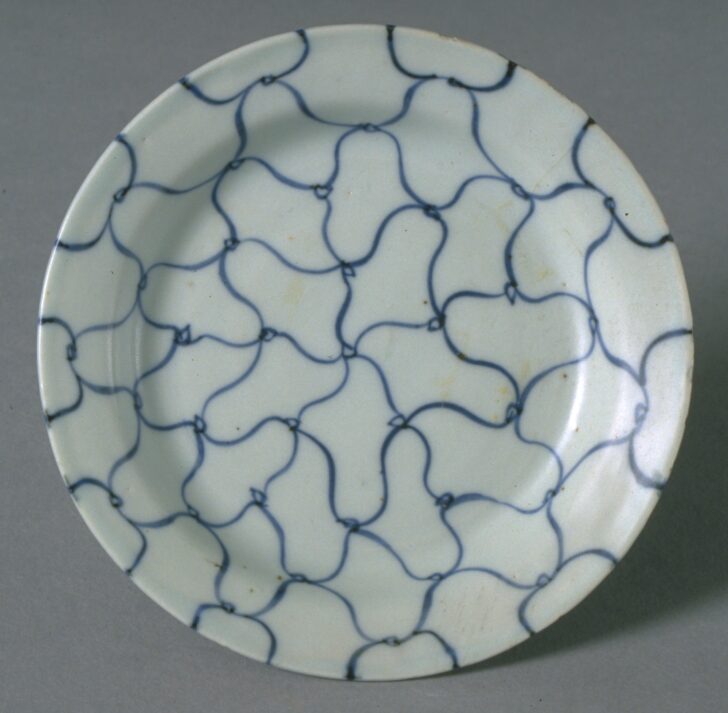Saucer
Chinese

Description
Subject Matter:
A qinghua (清华) blue and white saucer of the Tianqi period (1621-1627) of the Ming Dynasty (1368-1644).
The discovery of kaolin clay at Jingdezhen, Jiangxi led to the establishment of official kilns during the Yuan dynasty (1279-1368), and the production of pure, white, hard paste porcelain and porcelain decorated with underglaze blue. During the 13th century of the Yuan dynasty, with the establishment of Pax Mongolia, blue and white porcelains were exported to Europe and the Middle East, as both tribute gifts, as well as, for the overseas export market. This continued through the Ming dynasty where porcelain was used domestically by all classes of society. A vast array of forms and designs were made to appeal to a large and diverse overseas, as well as, domestic market.
One of the most popular forms of decoration was underglaze cobalt blue. During the Yuan dynasty, the principal source of cobalt came from Persia, in the Ming, however, local sources were found. The domestic cobalt, high in manganese and iron, resulted in a deep blue color with dark specks that has become known as a “heap and piled” effect, a hallmark of Ming qinghua (blue and white) wares, that was imitated in the later Qing dynasty.
Physical Description:
A porcelain saucer with flat base, curved sides, straight flaring rim, on a footring, painted with an underglaze cobalt blue fishing net pattern, with double ring inside base with four character Tianqi mark, covered in clear glaze.
Usage Rights:
If you are interested in using an image for a publication, please visit https://umma.umich.edu/request-image/ for more information and to fill out the online Image Rights and Reproductions Request Form.